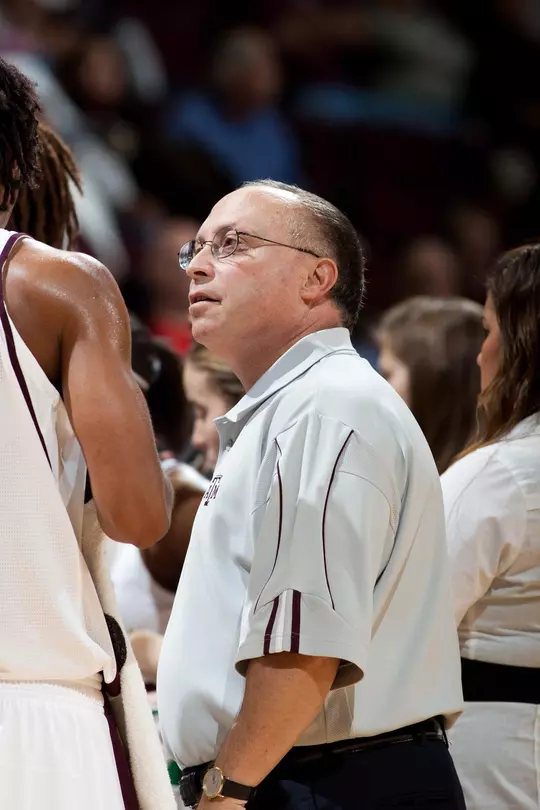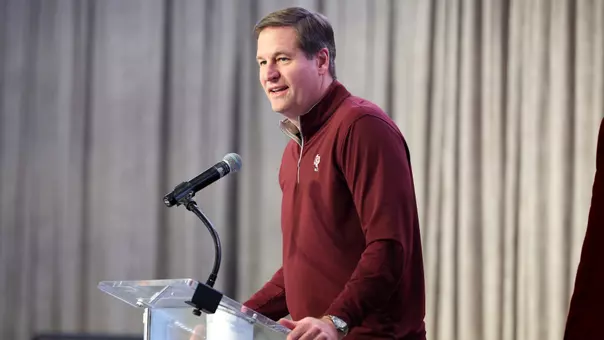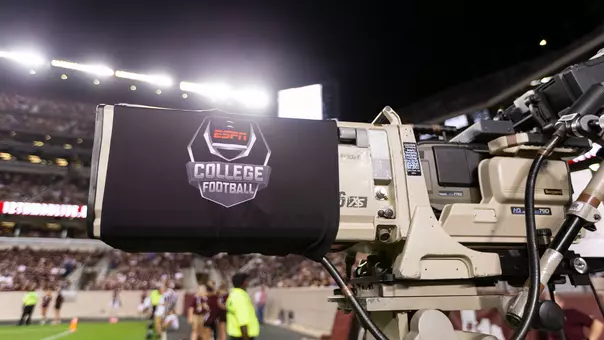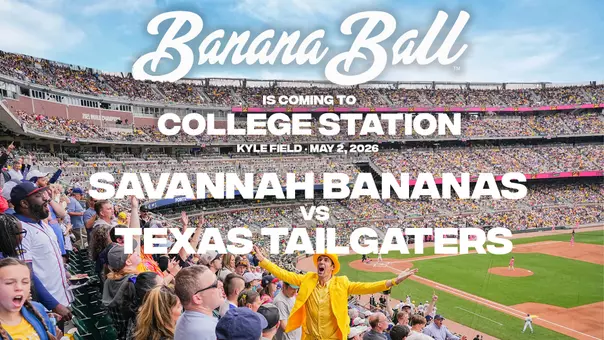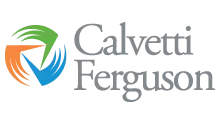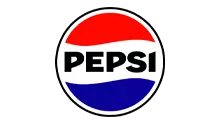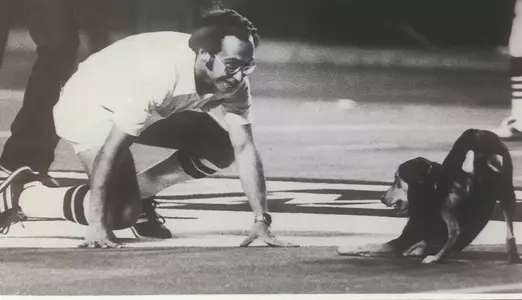
Radar
Aug 31, 2021 | General
“Radar, you come up to the free throw line. If you make it, practice is over, and if you miss, we’re going to have two more hours,” former Texas A&M men’s basketball head coach Tony Barone called out to his team’s athletic trainer.
It was Thanksgiving morning under the lights of G. Rollie White Coliseum circa 1992. Barone had the Aggie men’s basketball team working out. Barone had drilled the Aggies for an hour of a scheduled 3 1/2-hour workout. He decided it was time to see if his athletic trainer had what it took to send the team home early.
This wasn’t the first time that Mike “Radar” Ricke had been called to the line.
In his days working under the legendary Shelby Metcalf, who led the Aggies for 27 years, it was somewhat of a regular occurrence. He made some, missed some, but never had his prowess at the charity stripe ever carried this much weight.
If he makes it, they go home. If he misses, the Aggies have two more hours on the hardwood on Thanksgiving Day. Naturally, all eyes and hopes were on him.
Radar made his walk to the line with the entire team gathering its breath, praying that he ended the day’s practice. The spotlight followed as he received the ball. He entered a free-throw routine he hadn’t invested time in to perfect. Without any warm-up he readied himself at the line.
“I better make this,” Radar thought to himself.
MAKING A NAME FOR HIMSELF
Mike Ricke is from La Marque, a small town between Houston and Galveston with a population of approximately 15,000 people. He is the son of Mr. and Mrs. K.E. Ricke.
He concluded his 42-year career as an athletic trainer at Texas A&M on August 31, 2021. He was the longest-tenured employee of the athletics department. His career touched six decades, beginning in 1979 as a student trainer.
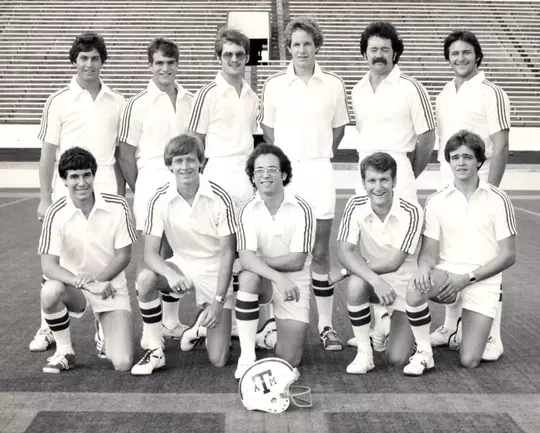
Ricke worked with a long list of legendary A&M coaches, including Metcalf, Tom Chandler, Mark Johnson, Jackie Sherrill, R.C. Slocum, Kermit Davis and Gary Blair.
You may have figured out his nickname “Radar” if you have ever seen or heard of the show M*A*S*H, which aired on CBS from 1972-83. If you haven’t, that’s no problem. We know for sure his childhood friend and classmate John was a big fan of the classic television program.
“That started when I was in eighth grade,” Radar said. “We were sitting there at lunch one day, and a good friend of mine looked at me and said, ‘you know, you look just like Radar from M*A*S*H.’ And all of a sudden the nickname just took off. Radar followed me through to high school.”
It took off because it was just perfect.
Neither our Radar, nor the Walter Eugene “Radar” O’Reilly character portrayed by Gary Burghoff on the hit TV series are “vertically inclined.” They both are right around 5-foot-6, and they rocked thick glasses, curly hair and lovable personalities.
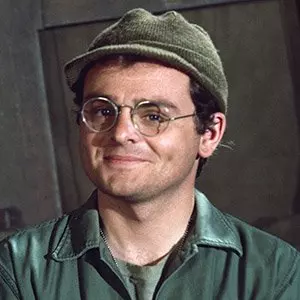
Radar’s athletic training career officially began in high school, where he served as a student trainer. As the decision to choose a college approached, the high school senior had a few choices.
“When I graduated from high school, I was lucky,” Radar said. “My high school hired an athletic trainer when I was a freshman. We hadn’t had one. So, my sophomore year, we had a guy from the University of Houston. By junior year we hired a guy named Jim Kotch, who also was the ticket manager at Texas A&M. Then senior year we had another guy who went to TCU.
“Those were the three places I could choose to be a student trainer because those were the guys I knew, and they introduced me to their bosses in college.”
Kotch introduced Radar to the legendary Billy Pickard, who was a trainer with the iconic Junction Boys and had a 60-year career at Texas A&M. Pickard brought Radar to campus so he could see the Aggies up close.
That’s all it would take.
The Aggie football team won 19-0 on opening day of the 1976 season and won the heart of a young man from La Marque.
“I was on the sideline at the Virginia Tech game in 1976, and that’s when I decided this was the place I was going to school. He made me an offer as a student manager,” Radar said.
That offer came in the form of a letter that Radar still has. He and Mr. Pickard had a special relationship. Pickard was a mentor who served as another father figure. He was also the main reason that the nickname “Radar” found its way up to College Station. Mr. Pickard liked it. How could you not? And it stuck naturally.
The saying, “little eyes are always watching,” rings true. Radar watched Mr. Pickard’s loyalty and his work ethic. He appreciated his toughness and how he showed him the ropes. He was the major voice in his hiring as a full-time athletic trainer on June 1, 1983.
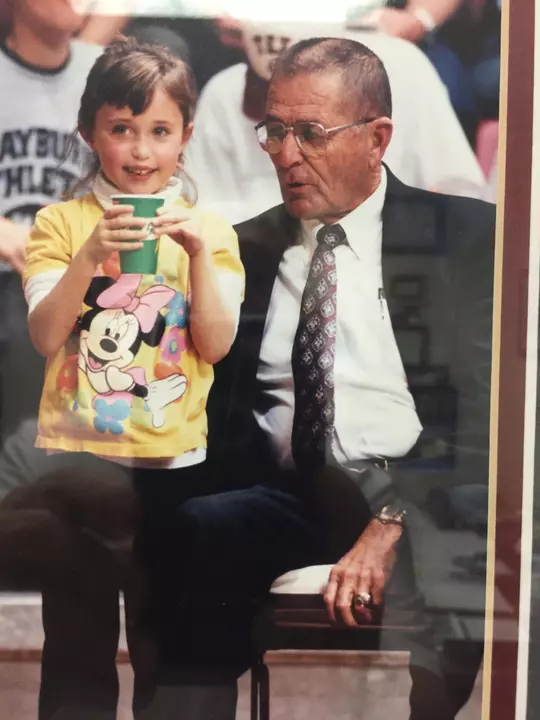
Together, Mr. Pickard and Radar would end their careers with over 100 years of service to Texas A&M. Pickard showed the way. Radar followed it.
RAGGABLE RADAR
Life as an athletic trainer is one of hard work, long hours, attention to detail, keeping student-athletes healthy and dealing with some good ol’ fashioned “ragging.”
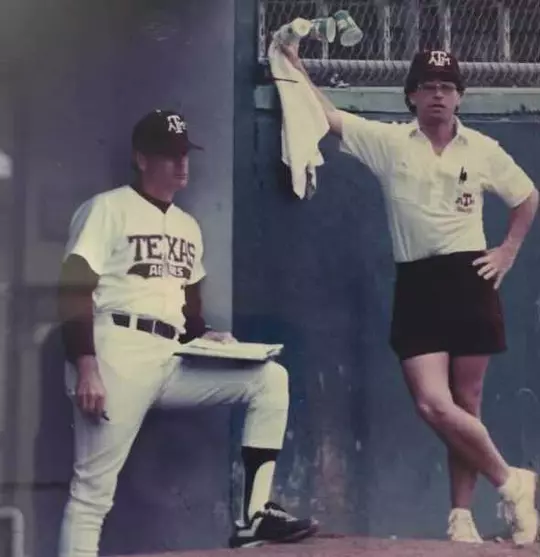
Radar and Johnson worked together for a large portion of Johnson’s stint as head coach of the Aggie baseball team from 1985-2005. That’s a lot of road trips and ragging.
“He was what you call, ‘baseball raggable,’” Johnson said.
Baseball “raggable” means you are susceptible to being ragged on.
If you’ve never been a part of a team in sports, especially baseball, you may not quite get it. But when you are on that team, you aren’t exempt from a hard time.
“Oh my gosh,” Radar said. “Those guys on those bus trips, I would sit there and listen to it for about as long as I could. And then I would have to get up and go back there and get on those guys. The good thing is I can take it, but I can dish it out too.
“That’s what you have to be able to do with those baseball guys, because they loved giving everybody a hard time. We had those bus trips to Arkansas and Lubbock. Both of those are about eight-hour trips, so those guys could really get after you.”
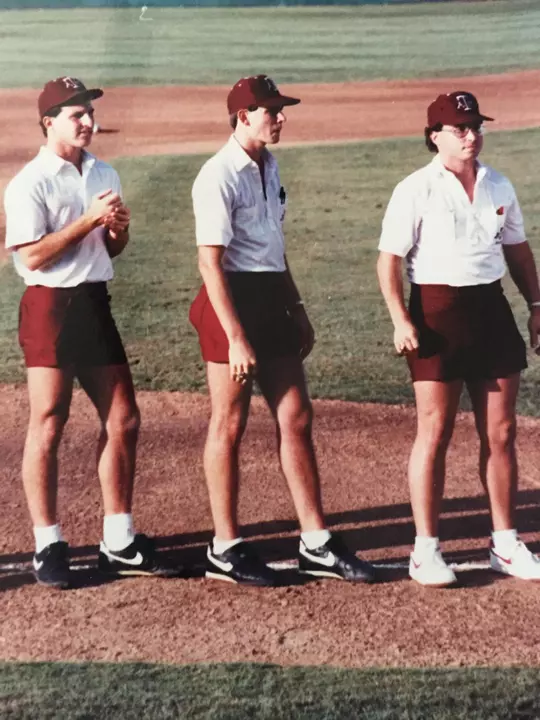
This wasn’t confined to just the baseball team or any other team. The hijinks definitely found their way into his office.
Former Texas A&M athletic trainer Karl Kapchinski and current A&M athletic trainer David Weir remember pulling a few pranks back in the day.
There was the time that Radar found his desk over the “throne.” They once saved newspapers and old media guides for months and then stuffed them into his office so Radar could barely open the door to his office, which was hidden away in the depths of Kyle Field.
“They brought those media guides in and stacked them to the ceiling,” Radar said. “My office, once I got an office, was back in the back of the rehab area. If you came back there you were either lost and didn’t know where to go, or you really did know where to go and you were coming to see my office.
“It was like the end of the world back there. I opened my door, and there were newspapers and media guides stacked sky high. It was unbelievable. They helped me clean it up, but it took about 10 trips worth of laundry buggies to empty it. There was a lot of stuff.”
Don’t feel too bad for Radar, however. He could dish it too. There was the time where Radar was giving his close friend and former groundskeeper Leo Goertz a hard time.
So Goertz “lightly” placed Radar into a trash can.
“He put me in a trash can one time,” Radar said. “He grabbed me by my feet and swung me in the air kind of like helicopter blades in our room, because he wanted to order pizza. He loved to eat, and he loved to eat late at night. It was close to midnight, and he said that he was hungry, and so we got into an argument, and he picked me up and started swinging me around. He didn’t hurt me, but I decided that we should probably order that pizza.”
In sports that’s considered a display of affection.
“Guys get ragged because they are liked, not disliked.” Johnson said.
It’s all love.
“EVERYBODY JUST LOVED HIM”
At the reunion of the historic 1989 Aggie baseball team, everyone asked for Radar.
He is a guy people love and want to have around.
“He was always such a fun-loving person, and everybody just loved him,” said Kapchinski, who now serves as the head athletic trainer at A&M Consolidated High School. “He was always conscientious, courteous, worked hard and looked out for everybody’s best interest.”
His work ethic gave people no choice but to trust him.
“He is a very trustworthy guy. I would trust him with anything,” Johnson said. “He just puts his head down and gets the job done. He’s going to get it done that day. He is dependable and reliable. When I asked him to do something, I never even checked up on him. He did his job, and that is the reason he has been around for so long.”
He always crossed all Ts and dotted all the Is. He was always available for his student-athletes, made sure they got the help they needed and advocated for them daily.
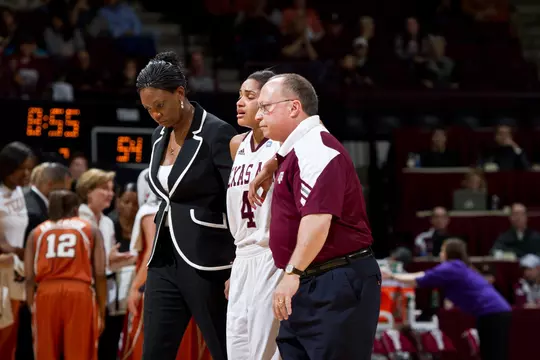
Let’s take a step back to 1981. It is Aggie baseball practice and walk-on infielder Alan Cannon hobbled over to the training table with a sprained ankle.
Hall of Fame head baseball coach Tom Chandler called walk-ons like Cannon “Amazing Walk-ons” because it was amazing that they made the team.
Radar took care of him, and he never missed a game.
Cannon’s baseball playing career didn’t last too long, however. He transitioned into becoming a sports information director (SID) at Texas A&M. AC, as he is known now, would help out in the sports info office throughout his college career. He was hired full-time in 1985 as the SID of the baseball team.
The two were paired as roommates back on campus as students and on the road as co-workers. Radar’s snoring is stuff of legend with how loud it is. So, take a moment to appreciate AC surviving that.
Over the course of the years rooming with and working long baseball seasons with someone, you grow a friendship.
Funny enough, Radar had a hand in setting AC up with his wife, Kaye.
“We didn’t think too much of it,” Radar said. “It was just a blind date for those two, and it really stuck. I remember they started going out more and more, and we thought that was interesting. That stuck quickly, and it’s happily ever after for them.”
Radar was the best man next to AC’s father at AC’s wedding.
Radar and AC have had a working relationship that spanned from 1981 on that baseball diamond.
“You like to work with people you trust that you know are good people,” Cannon said. “People who are going to have the best interest of the student-athlete and the institution, that makes going to do your job more fun.”
It’s hard for AC to see his old friend go.
“It’s hard because when we first started it was like a family business,” AC said. “It isn’t really that anymore. It’s more of a big business. Not saying that is good or bad. It’s just different. It’s sad to see some old timers go.”
With Radar retiring, that means that AC is now the longest-tenured employee in Texas A&M Athletics. The torch is his. Rest assured that Radar couldn’t be happier to be leaving it with an old friend from the family business days.
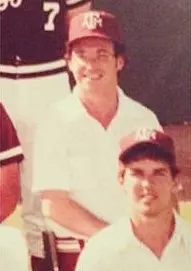
MORE THAN A JOB
When you leave a place, you wonder what you’ll miss the most. For those of us who have never been anywhere longer than the time it takes to drink a cup of coffee, those moments don’t hold as much weight.
When you’ve been somewhere for 42 years, those things are a bit clearer.
“You always like practice,” Radar said. “I’m going to miss all the practices and the games and just spending time with the players. I knew when I played seventh grade football that I was a terrible athlete. I finished the year so bruised up, because ball carriers would just drag me and fall on me in the end zone.
“I just didn’t weigh enough, and my mother forced me to finish the season. After seventh grade football, I had to find something else to do, so it’s good that I became a student trainer. I’ll miss the games and the practices, my coaches.”
For a lot of us, practice seems like the worst part. It seems boring and repetitive. For Radar, it was when he worked. That’s when all the ragging would happen. It was when he would see an injured player make progress after months of therapy. It was where he would see his student-athletes gain confidence and trust themselves and the team.
When you leave, you also think about what your favorite moments were.
One of Radar’s favorite memories in football was when Jackie Sherrill led the Aggies to his first Southwest Conference championship in 1985. He attended the 1986 Cotton Bowl on New Year’s Day.
“One of my bosses took that day off just so I could go, so that was a big moment I’ll always remember,” he said. “Being with Coach Johnson in the ‘80s, getting to those regionals, and we didn’t make it to Omaha until 1993, and that was a big deal because we hadn’t been since 1964.
“Getting to regional play with Coach Johnson was great, and we got to see a lot of amazing places along the way. There were a lot of good things with baseball. And then obviously, with basketball, the 1987 team with the men had to be a big deal, beating the top seed in the Southwest Conference tournament. We won the conference tournament as the eight-seed, and then went to the NCAA Tournament and lost to Duke in the first round, but (Aggie forward) Mike Clifford held Danny Ferry to two points, and he was the college player of the year.
“Then, with Coach Blair coming in, we got to the Elite Eight and lost to Tennessee with Candace Parker. It’s so hard to get there and it’s so hard to play well once you’re there. Obviously winning the National Championship in 2011 was a big deal, and last season’s team that won the conference in the middle of Covid-19 was a big deal.”
Sometimes we only think of the championship. Just that moment by itself. There are a lot of people who don’t endure the heartache of failure. That heartache makes the winning that much sweeter.
Not making it to Omaha until 1993 when you have been working with baseball since 1981 is a feeling people don’t get when you’re on the outside.
Seeing your women’s basketball team get so close to a national title only to fall, and then come back and take the whole thing is as sweet as it gets.
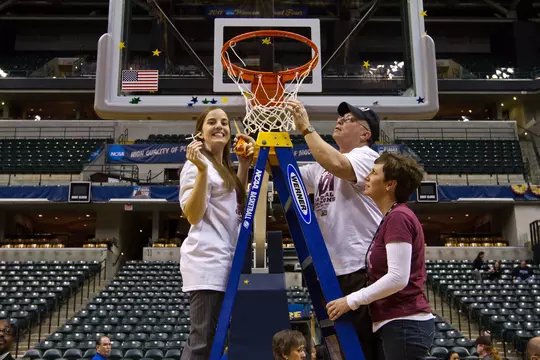
Enduring the coronavirus-impacted season, and coming out with an SEC Championship on your home court?
Radar felt all of the same pain of those failures. He was there making sure he was ready for when his team called upon him.
What comes with that is sacrifice. Time away from his beautiful wife and kids. Traveling with a team means you miss some holidays or some special occasions.
In 40 years, he estimates he has been home three times for Thanksgiving.
“My own kids were like, ‘Dad, why are you here?,” he says.
He would remind them that he lived there.
“But Dad, we never see you at Thanksgiving,” they would tell him.
Now he admits it will be nice to be home for the holidays.
“We always traveled during that time of the year,” he says. “With Coach Blair we would go to the Bahamas or the Virgin Islands or California around that time of year. With the men, at Christmas, we usually traveled Christmas Day. It’ll be weird for a couple of years as I begin to unwind. The best part about the retirement will be that I get to cut back a little more.”
When you hear that you start to ask yourself, “What makes it worth it?”
We asked Radar that same question.
He took a moment.
As he fought back the emotions of the thought he said:
“You know, when you go to school here, when you’re a Former Student—the emotional ties are huge,” he said. “A lot of people don’t get that opportunity. I was fortunate to be able to work where I went to school. That pride means a lot. I think that was the biggest thing for me. A lot of people don’t get that opportunity, don’t get to see the job this way. This was more than a job. It makes it special. It really does.”
Remember that free-throw from the beginning on Thanksgiving Day?
Radar made that shot.
When he made it, the entire team rushed the court and carried him away, going home to celebrate Thanksgiving a little earlier than they had planned.
It’s the end of an era. A good Ag served A&M beautifully for 42 years.
If you see Radar, give him thanks. He isn’t going anywhere. He isn’t dying, but he is leaving.
Radar, we lift you up one more time and thank you for everything you have done for Texas A&M University.
You’re leaving it better than when you found it, and it is in good hands.
